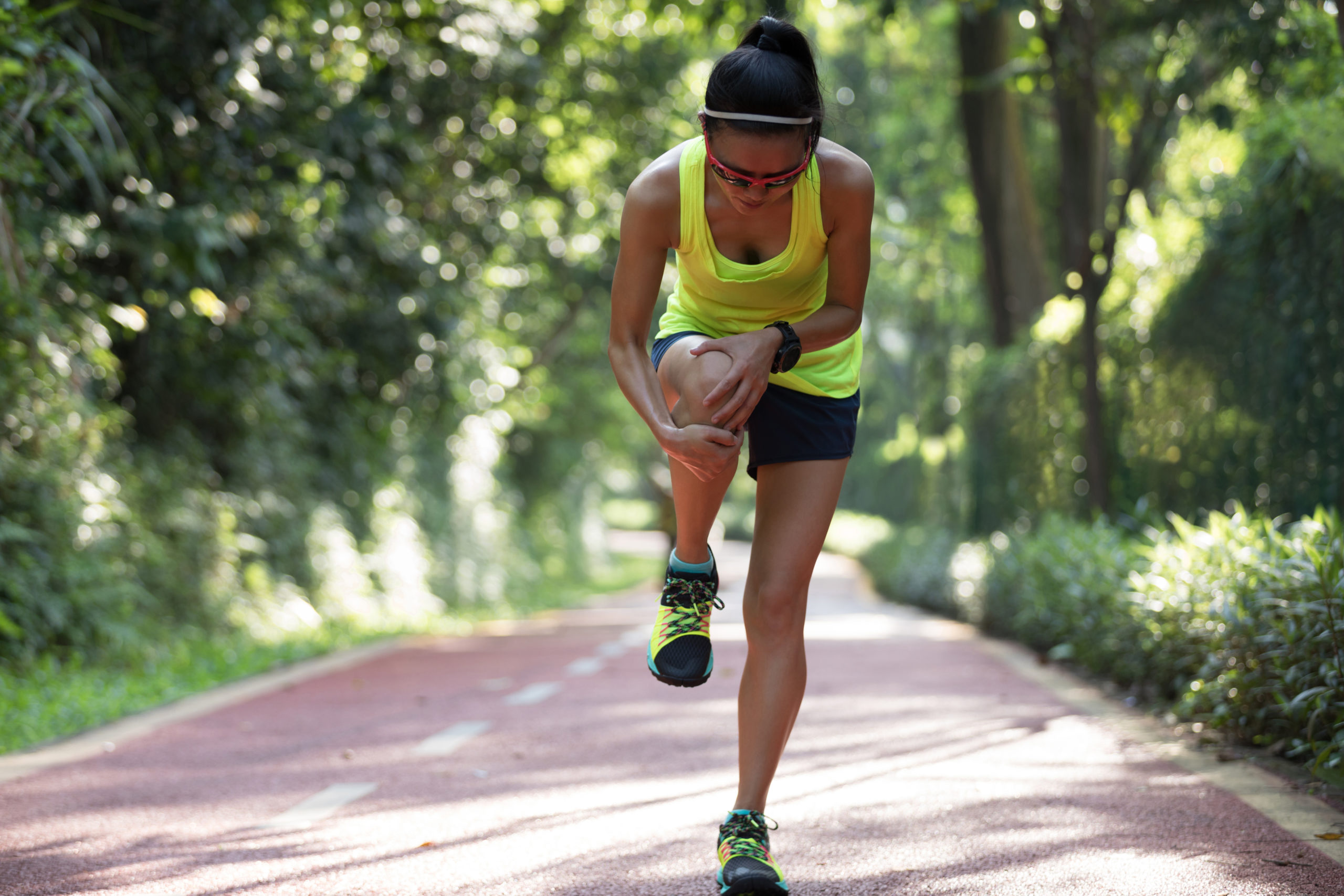Patellofemoral Syndrome, or anterior (front) knee pain, is common among athletes of all ages. Many athletes think they have “runner’s knee” and may be unaware that they are experiencing patellofemoral pain syndrome. Any individual or athlete can experience this syndrome if the knee is exposed to enough pressure and wear and tear. This article will discuss the causes of Patellofemoral Syndrome among active individuals and the spectrum of risks related to various sports and activities.

Beyond Runner’s Knee
Runner’s knee is a broad term used to describe the pain you may feel in the front of your knee. Patients who experience patellofemoral pain syndrome (medical language for Runner’s Knee) report anterior (front) knee. This pain is in the patellar region, which is part of the extensor mechanism. The patellar tendon (just below the kneecap) is another source of pain in this region.
Overuse, malalignment, or trauma can all cause patellofemoral pain.
A primary cause of patellofemoral pain is excessive pressure applied between the patella and the underlying femur. The amount of pressure varies depending on the position during activity, the type of activity, and the individual’s shape and knee alignment.
Activities that keep the knee relatively straight or slightly bent exert little pressure on the patella. By contrast, those activities that involve deeper bending, especially loaded (think lunges), really stress the patellofemoral joint.
Here are a few examples of Lower-risk sports:
Fast-paced walking – skating – lower paced jogging – flutter kick swimming – higher seat cycling, cross country skiing. Hiking on flat ground
As the degree of knee flexion and pressure increases, so does risk. Moderate Risk sports include:
Downhill skiing – Baseball – Tennis – Soccer – Lower Seat Cycling – Hockey – Hiking on hills – Kneeling activity such as Yoga or Gardening.
High-risk sports include:
Running – Basketball – Volleyball – Football – Hiking steep hills/mountains – Rock Climbing
What Are My Options?
One of the most frequent questions I get is: “Will I have to stop doing the sports or activities that I love?”
The answer is, typically, you do NOT have to stop. Our goal is always to help our patients remain physically active and get back to the sports and activities they love as soon as possible. With proper modifications, interventions, and treatments, we can help you get back to doing the activities you love.
If you are experiencing pain and symptoms of Patellofemoral Syndrome, it is crucial not to neglect that pain and seek a treatment plan tailored to your unique situation.
Intervention can help slow down the deterioration process and prevent further injury down the line.
Immediate Steps to Take When Experiencing Patellofemoral Pain:
- Slow down and pause activities, avoid painful positions or exertions
- Implement a hamstring stretching routine (this can help alleviate pressure on the patellofemoral joint)
- For hiking, try using poles for going downhill
- A knee sleeve can provide some relief, especially in the colder months, as it improves knee circulation, limits swelling, and can support the patella
- Apply ice to reduce inflammation (about 10-15 minutes post-activity)
- Take OTC Medication for pain and inflammation according to proper instruction
About Davidson Orthopedics
 Dr. Davidson has a decades-long commitment to increasing the understanding and treatment options for patients with patellofemoral pain. He is a member of the International Patellofemoral Study Group, an exclusive group of experts dedicated to the study and treatment of patellofemoral problems. He provides comprehensive diagnostics and an ever-increasing roster of treatment options, ranging from relatively simple non-invasive treatments to complex surgical restorations. Of particular excitement in the past few years is the integrated usage of biologic injections into the knee, allowing improvement of the biologic environment within the knee, typically used effectively in conjunction with other modalities, allowing patients to maintain or resume an active lifestyle.
Dr. Davidson has a decades-long commitment to increasing the understanding and treatment options for patients with patellofemoral pain. He is a member of the International Patellofemoral Study Group, an exclusive group of experts dedicated to the study and treatment of patellofemoral problems. He provides comprehensive diagnostics and an ever-increasing roster of treatment options, ranging from relatively simple non-invasive treatments to complex surgical restorations. Of particular excitement in the past few years is the integrated usage of biologic injections into the knee, allowing improvement of the biologic environment within the knee, typically used effectively in conjunction with other modalities, allowing patients to maintain or resume an active lifestyle.
